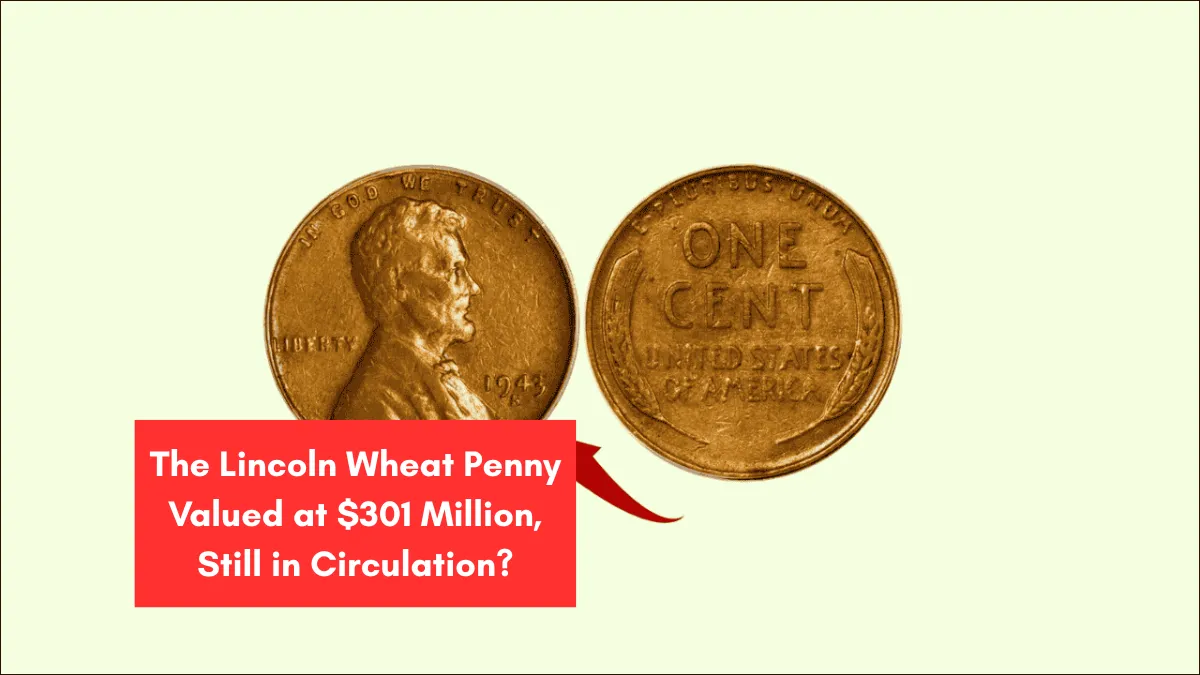It sounds like something out of a movie: a humble one-cent coin sitting unnoticed in a drawer, potentially worth $301 million. But according to numismatic legend and collector buzz, one ultra-rare Lincoln Wheat Penny might just be worth that staggering amount—and some believe it could still be out there, waiting to be discovered.
Let’s dig into the story behind the $301 million Lincoln Wheat Penny, what makes certain Wheat Pennies worth a fortune, and how you can spot one of these hidden treasures.
The Mythical $301 Million Lincoln Wheat Penny
First, let’s clear the air: No Lincoln Wheat Penny has officially sold for $301 million. However, in the world of high-end collectibles, speculation and legend often swirl around coins with extraordinary rarity, historical anomalies, or jaw-dropping minting errors. The rumored $301 million penny is likely tied to a unique prototype or error coin, possibly a 1943 bronze Wheat Penny or an unknown variation yet to be authenticated.
The astronomical figure likely comes from projected auction value, collector bidding wars, or speculative insurance appraisals if such a coin were ever verified.
What Makes a Lincoln Wheat Penny Valuable?
1. Rare Minting Errors
Certain pennies were accidentally struck with the wrong metal, date, or design. These mistakes make them incredibly rare and valuable.
Example:
- 1943 Bronze Wheat Penny – During WWII, pennies were made of zinc-coated steel. But a few bronze planchets were accidentally used. Only about 15 of these are known to exist. One sold for $1.7 million.
2. Extremely Low Mintage
Coins with very limited production runs are naturally more collectible.
Example:
- 1909-S VDB Penny – The first Lincoln cents featured designer Victor D. Brenner’s initials (VDB). The San Francisco mint only struck 484,000 before removing the initials due to controversy. Pristine examples can sell for over $100,000.
3. Unique Prototypes or Off-Metal Strikes
A coin mistakenly struck on the wrong metal or planchet can become a one-of-a-kind collector’s dream.
Example:
- 1944 Steel Wheat Penny – In 1944, the mint returned to copper coins, but a few steel planchets from 1943 were accidentally used. Fewer than 30 are known, and they sell for over $100,000 each.
Could the $301 Million Penny Really Exist?
If it does, it would have to meet all of the following conditions:
- One-of-a-kind production (possibly experimental or unrecorded by the Mint)
- Minting anomaly on an iconic year like 1909 or 1943
- Perfect condition (MS-68 or higher) verified by a top grading service
- Possibly owned or authenticated by a high-profile collector or institution
This theoretical coin would be valued not just for rarity, but for historical significance and story—which, in high-end auctions, can add tens of millions to the final price.
Signs You Might Have a Rare Lincoln Wheat Penny
Check your coins for the following:
Wheat Ears on the Reverse: Minted from 1909 to 1958
Key Dates to Look For:
- 1909-S VDB
- 1914-D
- 1922 (No D)
- 1943 (Bronze)
- 1944 (Steel)
Error Indicators:
- Double die obverse (look for doubled letters/numbers)
- Off-center strike
- Wrong metal color or magnetic reaction (steel vs. copper)
How to Verify Your Penny’s Value
- Weigh the Coin – A 1943 steel penny weighs about 2.7g; a copper penny weighs 3.1g.
- Magnet Test – Steel coins stick to magnets, copper ones do not.
- Get It Graded – Use PCGS or NGC, top-tier grading services.
- Consult a Numismatist – Visit a coin show or reputable dealer for authentication.
Final Thoughts: Keep Your Eyes on Your Change
While a $301 million Lincoln Wheat Penny may still be more legend than confirmed reality, history has shown that rare pennies can sell for millions. And crucially, many valuable specimens have been found by ordinary people in their spare change.
Moral of the story: Don’t dismiss your pennies—especially the old, worn ones with wheat stalks on the back. That “worthless” coin could be the one that makes headlines.

